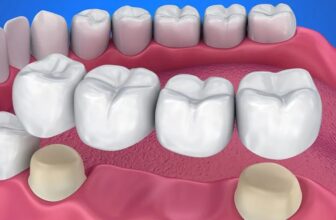
Oxygen is the unsung hero of athletic performance and recovery. Whether you’re an elite athlete or a fitness enthusiast, understanding the role oxygen plays in your training and recovery can unlock new levels of endurance, strength, and resilience. This article delves into the science behind oxygen’s importance in sports, explores innovative practices like oxygen therapy in sports, and provides actionable tips to incorporate oxygen-optimizing techniques into your routine.
The Role of Oxygen in Sports Performance
Oxygen is essential for energy production. During exercise, muscles require a continuous supply of oxygen to convert nutrients into ATP (adenosine triphosphate), the primary energy currency of the body.
Key Functions of Oxygen During Training:
- Sustaining Endurance: Oxygen enables aerobic respiration, which powers prolonged physical activities.
- Reducing Fatigue: Higher oxygen availability delays the onset of fatigue by minimizing lactic acid buildup.
- Enhancing Stamina: Oxygen-rich environments improve the efficiency of oxygen transport, boosting overall athletic endurance.
In high-intensity or anaerobic activities where oxygen demand outpaces supply, the body temporarily shifts to anaerobic energy production. This leads to the production of lactic acid, which causes muscle fatigue and soreness.
Why Oxygen Matters in Recovery
After training, oxygen plays a pivotal role in restoring balance and repairing the body.
Post-Exercise Benefits of Oxygen:
- Faster Lactic Acid Clearance: Oxygen helps break down lactic acid accumulated in muscles, reducing soreness.
- Enhanced Muscle Repair: It supports the regeneration of damaged muscle fibers, speeding up recovery.
- Reduced Inflammation: Adequate oxygen levels help reduce post-exercise inflammation and oxidative stress.
- Improved Energy Replenishment: Oxygen aids in restoring ATP levels, ensuring the body is ready for the next workout.
The Science of Oxygen Therapy in Sports
Oxygen therapy in sports is an emerging trend that leverages increased oxygen availability to boost performance and recovery. This method involves breathing in oxygen-enriched air during or after exercise to maximize oxygen delivery to muscles and tissues.
Types of Oxygen Therapy Used in Sports:
- Exercise With Oxygen Therapy (EWOT): Athletes use oxygen-enriched air during workouts to enhance endurance and recovery.
- Hyperbaric Oxygen Therapy (HBOT): This therapy involves breathing pure oxygen in a pressurized chamber, accelerating healing and reducing inflammation.
- Supplemental Oxygen Devices: Portable oxygen concentrators are used for short bursts of oxygen intake during or after exercise.
The Connection Between Oxygen Levels and Performance
Studies have consistently shown that higher oxygen availability leads to improved performance and quicker recovery. Key findings include:
- Increased VO2 Max: VO2 max, or the maximum oxygen uptake, is a critical indicator of cardiovascular fitness. Oxygen therapy can help improve this metric.
- Better Aerobic Efficiency: Athletes can sustain higher intensities for longer durations with improved oxygen delivery.
- Enhanced Recovery Times: Faster oxygen replenishment post-exercise reduces downtime between training sessions.
How Athletes Can Optimize Oxygen Use
Incorporating oxygen-focused practices into your training and recovery routine doesn’t require specialized equipment. Here are actionable tips:
1. Master Breathing Techniques
Controlled breathing practices like diaphragmatic breathing, yoga, or even high-intensity interval training (HIIT) breathing drills can improve oxygen intake efficiency.
2. Incorporate Active Recovery
Low-intensity activities like walking or swimming promote oxygen-rich blood flow, aiding recovery without adding strain to muscles.
3. Focus on Cardiovascular Training
Aerobic exercises like running or cycling improve your body’s ability to use oxygen effectively.
4. Explore Oxygen Therapy
If accessible, consider integrating EWOT or HBOT into your routine for enhanced recovery and performance.
5. Hydration and Nutrition
Stay hydrated and consume foods rich in iron (spinach, legumes) and antioxidants (berries, citrus fruits) to support oxygen transport and reduce oxidative stress.
Real-World Success Stories
Many professional athletes attribute their success to oxygen optimization techniques. For example:
- Long-Distance Runners: Athletes who train in oxygen-enriched environments report increased endurance and faster post-race recovery.
- Soccer Players: Oxygen therapy has been shown to reduce recovery times between high-intensity matches.
- Weightlifters: Improved oxygen delivery to muscles enhances power output and reduces fatigue during strength training.
Potential Drawbacks and Considerations
While oxygen-focused strategies are highly beneficial, they must be used appropriately:
- Over-reliance on supplemental oxygen during training may reduce the body’s natural efficiency in oxygen utilization.
- Accessibility and cost of therapies like HBOT might be a barrier for some individuals.
- Athletes should consult professionals before incorporating oxygen therapy to avoid potential misuse or side effects.
Conclusion
Oxygen is a game-changer in the world of sports, from enhancing endurance during training to accelerating recovery after intense sessions. By understanding and leveraging techniques like oxygen therapy in sports, athletes can push their limits, reduce downtime, and achieve greater consistency in performance.
Incorporating simple oxygen-focused practices such as controlled breathing, active recovery, and exploring therapy options can significantly boost your fitness journey. Remember, oxygen isn’t just a lifeline; it’s a performance enhancer that deserves a central role in your training strategy.







